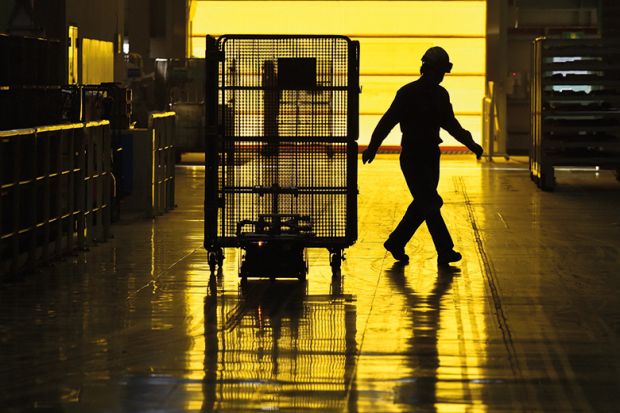Japan’s landmark internationalisation programme is being hijacked by language schools that are little more than “visa factories”, according to critics.
The 300,000 International Students Plan, launched in 2008, appears set to reach its milestone ahead of its 2020 deadline. Japan was home to 267,000 foreign students in May last year, according to the latest snapshot statistics from the Japan Student Services Organisation.
That represented a 12 per cent increase from 2016, indicating progress in the country’s efforts to expose its universities to foreign influences. The plan provides backbone for other education ministry initiatives – such as the 2011 Inter-University Exchange Project and the 2014 Top Global University scheme – designed to nudge Japan’s universities into more internationally competitive practices, by embedding them with international students and academics.
But critics say that an increasingly large proportion of these students were originally excluded from the target. Hiroshi Ota, director of the Global Education Programme at Hitotsubashi University in western Tokyo, said the growth was mainly at Japanese language colleges.
Enrolments at these colleges more than doubled between 2013 and 2017, compared with a rise of just 39 per cent at higher education institutions. Language colleges’ share of international students rose by 53 per cent over that period.
Professor Ota said that the real purpose of some “unethical” language schools was to supply unskilled labour – mainly from Nepal, Vietnam and Sri Lanka – for factories, restaurants, bars and convenience stores.
He cited news reports of shift workers who were bussed from factories to their daytime classes at language colleges, only to fall asleep. Teachers who protested were told to let them be.
Professor Ota said that, under immigration regulations, language enrolments were capped at two years’ duration. He said that some language school owners also opened technical training colleges that allowed them to retain students for a further two to three years.
In September, Japan Today reported that the government, wary of colleges promoting work visas masquerading as education, was closing a loophole that allowed colleges to deliver their visa-mandated teaching load within six months – enabling students to legally work full-time for the rest of the year.
Christopher Pokarier, a professor of business and governance at Tokyo’s Waseda University, agreed that some language colleges were more intent on selling visas than education. But he said a larger problem was that policy settings meant that the universities best placed to compete in the international higher education market had no incentives to do so.
He said international students were counted alongside their domestic counterparts in enrolment caps set by the ministry. Universities with strong domestic appeal found it easier to recruit at home, because overseas students were difficult to attract and support, and because Japanese alumni wanted their children to study at their alma maters.
All this meant that international student numbers would remain limited everywhere except universities with little domestic appeal, who would welcome foreign students as a “financial saving grace”.
Professor Pokarier said that a simple way of boosting internationalisation would be to exclude international students from the enrolment caps. Universities that recruited enough domestic students to meet their caps should be allowed to conscript additional overseas students to boost their revenue, he said.
Register to continue
Why register?
- Registration is free and only takes a moment
- Once registered, you can read 3 articles a month
- Sign up for our newsletter
Subscribe
Or subscribe for unlimited access to:
- Unlimited access to news, views, insights & reviews
- Digital editions
- Digital access to THE’s university and college rankings analysis
Already registered or a current subscriber? Login








